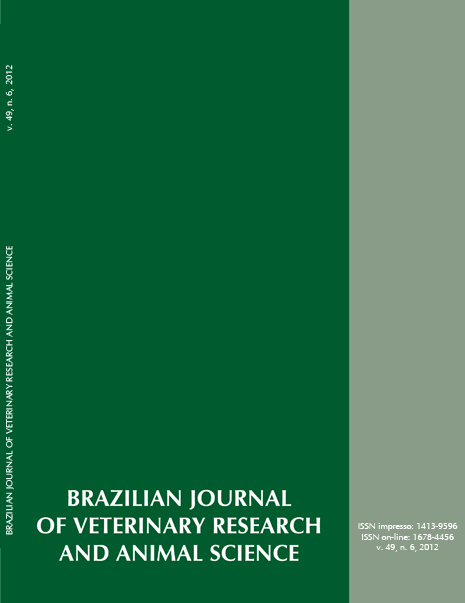Arrangement configured by bile duct in the liver of the ostrich (Struthio camelus)
DOI:
https://doi.org/10.11606/issn.1678-4456.v49i6p487-492Keywords:
Biliary system, Ostrich, Liver, Struthio camelus, GlandAbstract
The aim of this study was evaluate the influence of physical exercise (marcha gait) on serum values of CK and AST The Ostrich (Struthio camelus) is originally from Africa and belongs to the ratite’s family. Since its zootechnic value has been increasing, especially in the northwest region of the state of São Paulo, we studied the biliary system in the liver of this animal. To carry through it were used 20 ostrich livers, males and females, young and adults from place to production ostrich in the northwest region of the State of São Paulo. After the opening of the gastrointestinal tract and disposal of the bile through gentle massage, we cannulated the hepatic excretory duct with a flexible probe, compatible in size with the duct, and injected colored Neoprene latex “450” in the biliary system. Following this procedure, the livers were fixed in aqueous solution of formaldehyde to 10% dissected, schematized and photographed. The right main branch is derived from the right lateral, square lobe and the caudate process branches in 7 livers. In 13 livers, the right side branch is forned by the right side and caudate process branches. The left branch receives the components from the left lateral lobe and branch of the medial left lobe in 7 livers. It also receives component from the square lobe and from the caudate process in 13 and 7 livers, respectively. In conclusion, the ostrich liver has no gallbladder, causing the duct is the only route of excretion of bile, always resulting from the convergence of the right hepatic duct with the left hepatic duct.
Downloads
Downloads
Published
Issue
Section
License
The journal content is authorized under the Creative Commons BY-NC-SA license (summary of the license: https://





